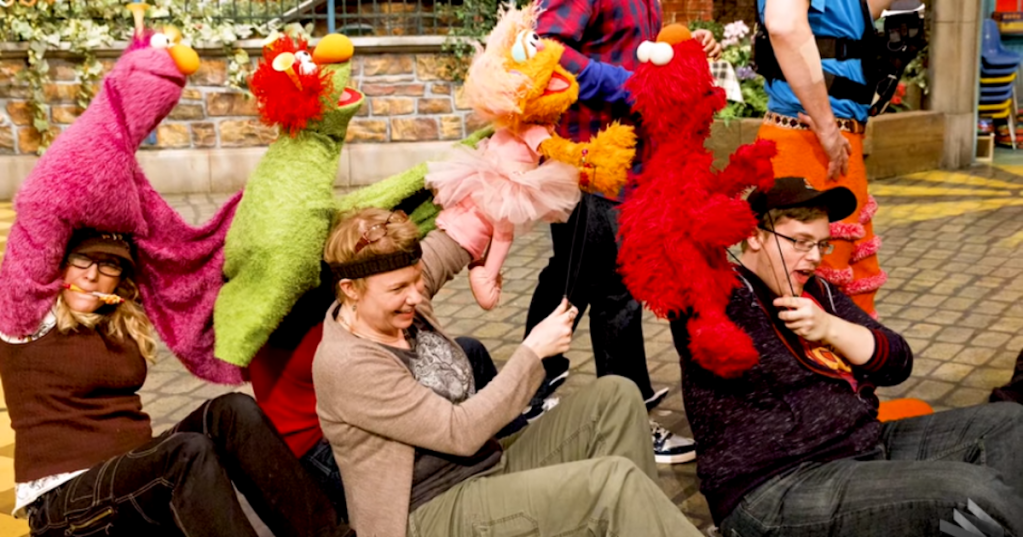If you are a human being of any age, chances are good that, at some point in your life, you watched Sesame Street.
The show was formative for so many of us, and continues to address important topics and guide our own children and grandchildren as the years march on.
Which is all to say that there’s not a person alive who might not be interested in these 11 secrets from behind-the-scenes (or strings) of the show.
11. The puppeteers have input into the puppet’s design.
https://www.instagram.com/p/Bie9YIrhISM/
There is a puppet factory full of “Anything Muppets,” blank designs meant to be one day used as the template for a brand-new character.
Back in 1991, puppeteer Carmen Osbahr got to help design Rosita, the first regular bilingual Muppet on the series.
“They had a meeting and asked what I had in mind. I was able to tell them I wanted a monster and I wanted live hands because I wanted to be able to play a musical instrument.
I wanted her to be active and colorful. I didn’t want a petite, tiny little monster.”
10. Most puppeteers get started as a right-hand man.
There’s no “must do” list before you can land a job as a Sesame Street puppeteer, but many (or most) begin by operating the right hand of veteran puppets on the show.
Ryan Dillon, Elmo’s puppeteer, told Mental Floss,
“A lot of performers will almost only do right hands for a very long time.
Some characters, like Cookie Monster, require to performers with two practical hands.
You’re working directly next to a performer with years of experience, You become one character together.”
9. They have pretty funny blooper reels.
https://www.instagram.com/p/BYBAKhmAvd-/
The job of puppeteer requires tons of concentration, and like any creative performances, takes are flubbed, admits Osbahr.
“The main thing is props. Grabbing stuff is easy, but if you want to pour something into a cup or write a letter, that’s hard.
You think you’ll have a glass but just miss it.”
Performers have also been known to fall off their rollies, sending puppets flying every which way.
Where’s the YouTube video of that?
8. They have tricks for helping their puppets emote.
Peter Linz, the puppeteer behind Ernie, told Mental Floss that it takes work to imbue a puppet with a personality and emotions.
“You have to show the entire range of human emotion through something that doesn’t have an expression.
You can make them look sad by having them look down. You can get them to smile by opening their mouth.
If they’re angry, maybe you close their mouth and then shake their arms ever so slightly. There are degrees of subtlety in all that.”
7. Most of the puppets have a dedicated puppeteer.
https://www.instagram.com/p/CEzLFC7AwnK/
Aside from sharing right hand duties, all of the puppets have one dedicated puppeteer.
They do have understudies that can make the puppets move in the case of a vacation or illness, but the original puppeteer will always do the voice.
6. Not all puppets can perform all tasks.
There are full body puppets, like Big Bird and Snuffleupagus, “bag” puppets like Cookie Monster, and hand-and-rod puppets whose arms are controlled by thin rods. It matters, Dillon says, when it comes down to details.
“Elmo is a hand-and-rod puppet. The difference means some puppets can do things others can’t.
Cookie Monster can pick things up. Elmo can, but it takes longer.
You need to stop filming and attach something to his hands with tape or a pin.”
5. There are special ways to keep the puppets clean.
https://www.instagram.com/p/CEJo2MlHoZn/
Being handled every day means the puppets have intricate cleaning needs – sweat, body oils, and the like can all build up.
Performers are able to mitigate some of it by picking puppets up by the scruff of their necks, and they’re stored carefully every day.
When they do get a bath, they’re placed on a wooden stand to dry out, sometimes under a dryer.
4. They rely on a key design element to connect to their audience.
The puppets all have simple eyes – two black dots against a white background – a design that harkens back to Henson himself. The reason, says Linz, is to help with communication.
“All of the characters are ever so slightly cross-eyed.
There’s a triangle between the eyes and nose and a point where it looks like they’re looking right into the camera. It’s a sensitive illusion.
Turning the puppet even slightly and they will wind up looking at something else.”
3. The puppeteers all work closely together – literally.
https://www.instagram.com/p/CDCgYUZA-9d/
There are often many Sesame Street puppets in the frame together, which means the puppeteers are usually working close to, or nearly on top of, other performers, explains Dillon.
“Mistakes happen.
Elmo has big feet, and Abby Cadabby has big feet, so you’ll often hit the other person with a foot.
It doesn’t hurt.”
2. They can spend entire days crouched on the floor.
You’ve got to be in shape, or you’re not going to cut it – puppeteers are often crouched below frame, balancing on wheeled boards called “rollies,” explains Dillon.
“The first day or two, your back and everything else is sore. It engages your whole body.
Your arm is up in the air performing.”
1. Guests speak to the puppets – not the puppeteers.
https://www.instagram.com/p/BPF4gMdhZVl/
Everybody who is anybody has taken a guest role on Sesame Street, and most of them – even off camera – address the characters and not the puppeteers.
Says Osbahr…
“Most everybody who visits us talks to the character like they’re alive.
The moment we bring a character down, we have a conversation, but it’s great to have a relationship with a character and a celebrity.
They’ll talk to Elmo, Rosita, Cookie Monster, and we’re talking to them right back.”
This is all pretty fascinating if you ask me!
Which of these surprised you the most? Tell us in the comments!
